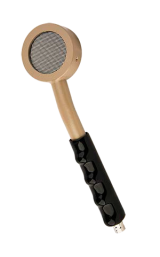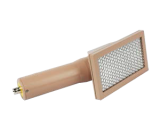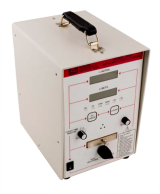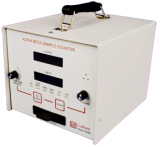Spanish Village Subdivision, Bridgeton, Missouri - Fact Sheet, December 2016
EPA Conducting Sampling
BACKGROUND
In November 2016, a lawsuit was filed on behalf of a family residing in the Spanish Village neighborhood of Bridgeton, Mo. The lawsuit alleged that radioactive contamination consistent with uranium processing waste was present in the home.
Out of an abundance of caution, EPA is conducting a focused investigation in response to concerns raised by residents of Spanish Village. EPA plans to sample two to three homes during this focused investigation.
SAMPLING PLAN AND METHODS
EPA personnel and contractors under EPA oversight will perform exterior and interior screening and sampling at a limited number of residential properties in Spanish Village. The Quality Assurance Project Plan for this investigation is available online.
For the exterior portion of the screening, radiation detectors will be used to survey the soil outside the home. The radiation survey will detect gamma radiation and be used to identify locations to collect soil samples from the surface of the property.
In addition to the sampling locations identified by the radiation survey, soil samples will be collected from areas with the greatest potential for contamination or exposure, including play areas, vegetable gardens and at other exterior features such as downspouts. If non-native soils are present on the surface or subsurface of the property, a sample will be collected to analyze those soils as well.
EPA will also conduct interior radiation surveys, and swipe and dust sampling. Handheld instruments that can detect alpha, beta, and gamma radiation will be used to determine optimum locations for dust sampling and surface swipe sampling of floors, walls, and furniture.
Swipe samples will also be collected from surfaces in rooms where people spend the greatest amount of time, such as a bedroom or living room. Swipe samples will be collected from entrances, where there is a higher potential for materials from the outdoors to be tracked indoors.
The swipe samples will be screened by EPA using appropriate field equipment. The swipe samples exhibiting higher results from the screening will be selected for additional testing and analysis at a laboratory. The certified laboratory will test for the presence of various radionuclides, including radium and thorium.
Following the survey, EPA will inform the homeowner of the general results. A final report with certified laboratory results of the analysis of soil and interior surface and dust samples will be available to the homeowner in approximately 60 days following the sampling.
NEXT STEPS
The data collected during this screening will help EPA determine if elevated levels of radionuclides are present beyond what is naturally occurring, and if further investigation and response by EPA may be warranted.
EQUIPMENT USED
EPA and contractors under EPA oversight will use the following equipment during the investigation. Additional equipment that may be used is outlined in the Quality Assurance Project Plan.
QUESTIONS?
If you have questions, please contact:
Ben Washburn
Community Involvement Coordinator
Phone: 913-551-7364
Toll-free: 1-800-223-0425
Email: washburn.ben@epa.gov





